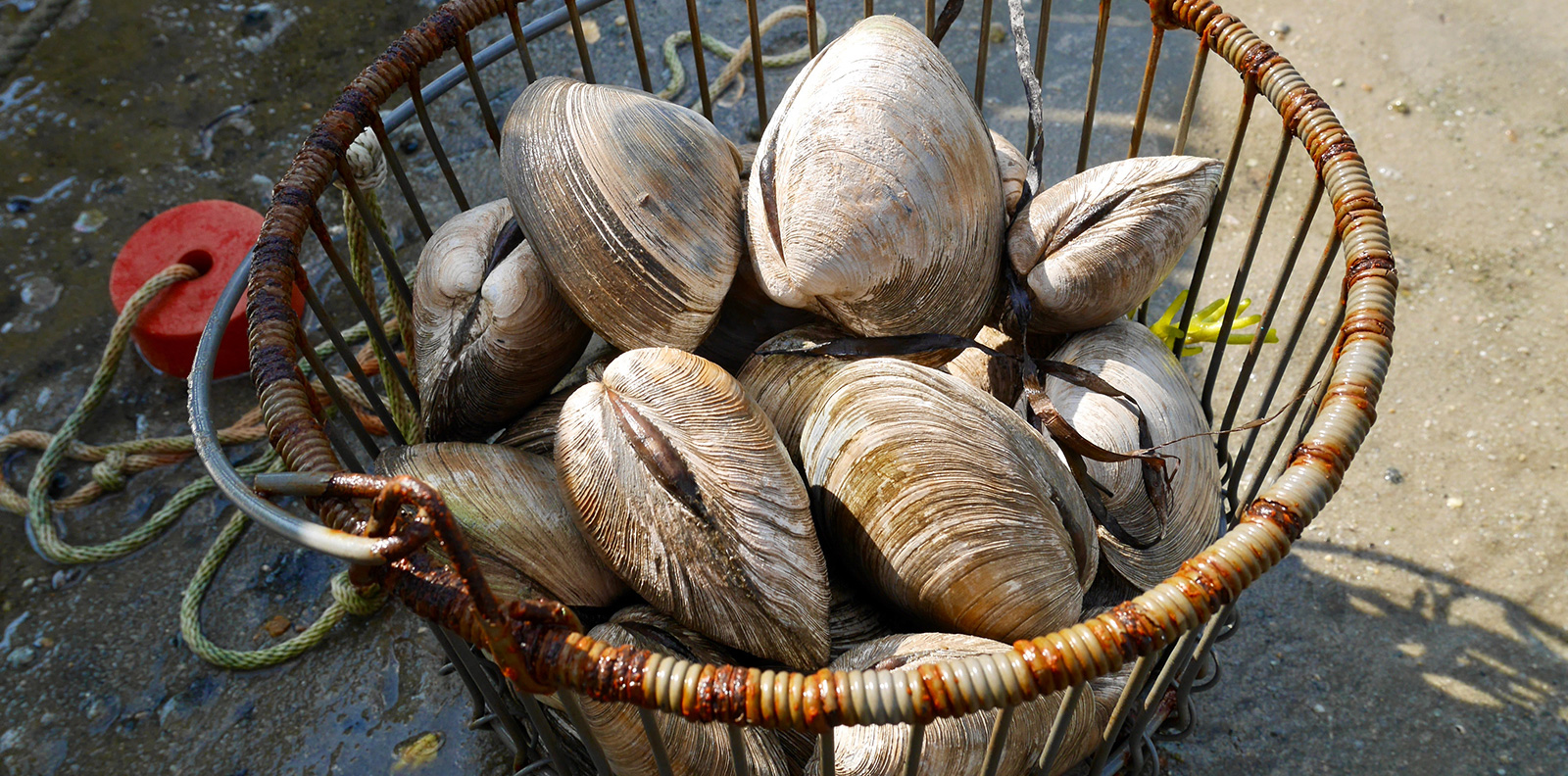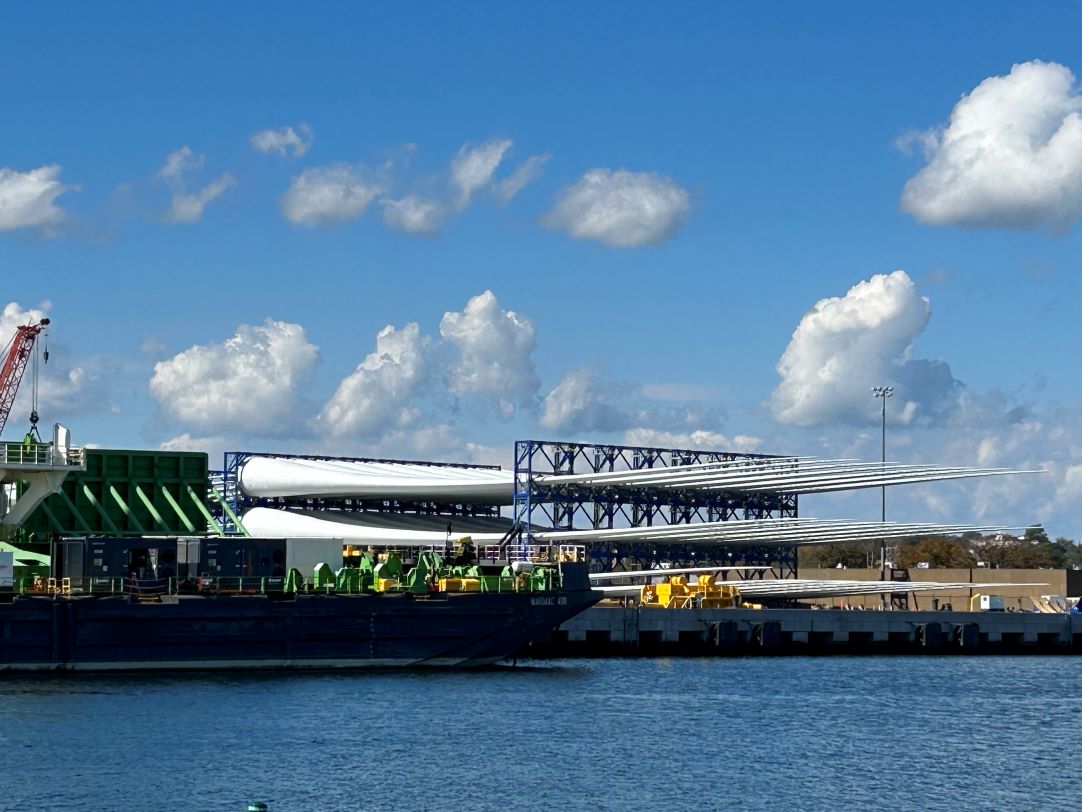Invasive Asian Crab Outcompeting Young Lobsters
August 1, 2018
Speculation about the cause of the decline of lobster populations in Narragansett Bay has focused on an increasing number of predatory fish eating young lobsters, warming waters stressing juveniles, and a disease on their shells that is exacerbated by increasing temperatures.
A new study by a scientist at the University of North Carolina points to another contributing factor: Asian shore crabs.
The crabs were first observed on the coast of New Jersey in 1988, where they probably arrived in the ballast of cargo ships. They quickly expanded up and down the East Coast — arriving in Rhode Island in 1996 — and they are now found at densities of up to 200 per square meter in the intertidal zones of southern New England.
“If you flip over a rock, it’s like going into an old basement and turning on a light and watching the cockroaches scatter,” said Christopher Baillie, who conducted the study as a doctoral student at Northeastern University. “They’re really abundant.”
The dramatic increase in the density of Asian shore crabs in the region was followed by a massive decline in the density of green crabs. Green crabs are also not native to the region, having been introduced more than 100 years ago, “but it’s an indication of what the Asian shore crab could be doing to native species,” Baillie said.
Adult lobsters live in much deeper water than the shallow intertidal zone inhabited by Asian shore crabs, so the two species seldom interact. But some larval lobsters settle in the intertidal and subtidal zones, which they use as nursery habitat. Prior to the arrival of Asian shore crabs, it was an area that had fewer predators and an abundance of food. But now the young lobsters are finding themselves in competition with the crabs for food and shelter.
When Baillie surveyed the shoreline in Nahant and Swampscott, Mass., over a five-year period, he found a dramatic increase in the density of Asian shore crabs concurrent with a decrease in the density of juvenile lobsters. He then conducted several laboratory experiments that found that smaller juvenile lobsters lost out to the crabs when competing for food and shelter, especially as the crab numbers increased.
“We saw that the presence of Asian shore crabs significantly reduced the amount of time the lobsters were able to spend in the shelter,” Baillie said. “The more crabs we introduced, the more times the lobster was displaced. When the crabs were at higher densities, the lobsters spent the entire time fleeing from predation attempts by the crabs.”
In similar tests, lobsters that were slightly larger than the crabs were able to obtain food and shelter, but the lobsters fed more frequently and ate faster in the presence of the crabs.
“It appeared that they perceived the crabs as a competitor, and sometimes the lobsters even attacked the crab,” Baillie said. “So while that sized lobster was the dominant competitor, there is a potential energetic cost to battling the crab as well as a potential for injury in those battles.”
According to Niels-Viggo Hobbs, a lecturer and researcher at the University of Rhode Island who studies Asian shore crabs, Baillie’s research confirms what many scientists have suspected: the crab has a substantial negative impact on young lobsters.
“There are still a lot of unanswered questions,” he said. “There may also be a positive impact for lobsters. The crabs may provide a food source for adult lobsters. Lobsters love to eat smaller crustaceans. The take-home message for me is that even when we talk about invasive species, we can’t always say they’re 100 percent bad.”
Although the crabs arrived in Rhode Island waters at about the same time that lobster numbers began declining in Narragansett Bay, Hobbs said it’s unclear if the crabs were a major factor in lobster decline.
“The problem is that on top of Asian shore crabs showing up, we also had lobster shell disease, increasing water temperatures, and other factors working to make life for lobsters more difficult,” Hobbs said. “The Asian shore crab certainly didn’t help. It’s difficult to say how bad an impact it had, but it was certainly poor timing if not worse.”
The long-term implications of Baillie’s study are unclear, since most lobster nursery grounds are in deeper waters than where Asian shore crabs are found.
“But as the crabs continue to expand their range into the northern Gulf of Maine, there is potential for further interactions with juvenile lobsters,” Baillie said. “And while there’s a number of things going on with lobster populations, we’ve shown that the Asian shore crabs may be reducing the value of this nursery habitat for lobsters.”
Unfortunately, there is little that can be done about the invasive crabs. They are occasionally used as bait by tautog fishermen, but not enough to affect population numbers. They are too small to be a valuable commercial fishery. A parasite in the crab’s native range in East Asia is believed to castrate the crabs, rendering them unable to reproduce, but releasing the parasite in local waters would likely cause more harm than good.
“It would be incredibly dangerous to go down that rabbit hole,” Baillie said.
“The crabs are established and here to stay,” Hobbs noted. “So the best we can do is keep an eye on how they impact our native species, and then hope that maybe there’s some good that comes out of it.”
Baillie hopes his study will at least draw attention to the effects the crabs have and prompt government leaders to prioritize what he calls “fairly simple changes in policies” — like requiring the discharge of ballast water in the open ocean — that could be implemented to prevent future introductions of invasive species to the local marine environment.
Rhode Island resident and author Todd McLeish runs a wildlife blog.




I would surmise that overlap of habitat for the Asian crab versus lobster is rather limited. I rarely seen juvenile lobster in intertidal and shallow sub-tidal areas, plus as the author states, warming sea temperatures is likely the greater factor affecting juvenile lobster mortality. As Asian crabs increase in Maine waters, my guess the battle with the invasive green crab will occur up there too. There are high local densities of green crabs in Maine that must also have an impact on juvenile lobsters.
I wonder if Asian shore crab’s impact on green crab will be reflected in a recovery of soft shelled clam which, as I understand it, might be getting killed off by green crabs?